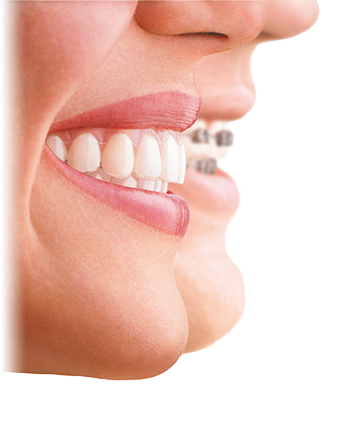 We should all know our mouths and be able to detect any problems in order to seek treatment, echoed by a dentist in Leeds. But to hear the word cancer in a diagnosis can bring the world tumbling down around you. Almost 5000 people a year are treated for oral cancer and it’s on the increase. So it’s important to educate ourselves into the causes of this disease, for prevention is more preferable to cure and with modern advances in the treatment of cancer, it has become less of a taboo than it used to be, but only if it is detected in its early stages. Excess and over indulgences in the search of the good life can be some of the causes of bad oral hygiene. The combination of smoking and heavy drinking are the greatest enemies of the mouth. But cancer can develop from bad diet, over exposure to sun or UV light and a low immune system also contribute to the build up of the disease. Symptoms follow- ulcers that don’t heal, lumps in the mouth, bad breath and loose teeth. A dentist would be able to spot these problems, so it’s important to have regular check-ups. If there are any signs of cancer, diagnosis will be made after a biopsy. Depending on the level of the problem, radio/ biological therapy, chemo or physical surgery will be required to remove all the infected areas. This can be a very distressing period and the recovery from such a trauma requires delicacy and support. Your dentist will be able to recommend the best solutions in order for you to make a full and complete recovery.
We should all know our mouths and be able to detect any problems in order to seek treatment, echoed by a dentist in Leeds. But to hear the word cancer in a diagnosis can bring the world tumbling down around you. Almost 5000 people a year are treated for oral cancer and it’s on the increase. So it’s important to educate ourselves into the causes of this disease, for prevention is more preferable to cure and with modern advances in the treatment of cancer, it has become less of a taboo than it used to be, but only if it is detected in its early stages. Excess and over indulgences in the search of the good life can be some of the causes of bad oral hygiene. The combination of smoking and heavy drinking are the greatest enemies of the mouth. But cancer can develop from bad diet, over exposure to sun or UV light and a low immune system also contribute to the build up of the disease. Symptoms follow- ulcers that don’t heal, lumps in the mouth, bad breath and loose teeth. A dentist would be able to spot these problems, so it’s important to have regular check-ups. If there are any signs of cancer, diagnosis will be made after a biopsy. Depending on the level of the problem, radio/ biological therapy, chemo or physical surgery will be required to remove all the infected areas. This can be a very distressing period and the recovery from such a trauma requires delicacy and support. Your dentist will be able to recommend the best solutions in order for you to make a full and complete recovery.





 According to a city of Leeds dentist, orthodontics covers one of the most important in dentistry. It centres on the mouth’s occlusion (the bite) and how to remedy any problems in the jaw’s position. This is achieved by correcting the growth of misaligned teeth, the coming together of the teeth, treating bruxism (teeth grinding) and teeth loss. This starts at a young age. Children are susceptible to teeth problems, especially as new teeth form in the mouth, and it is important to tackle any problems early on to protect the occlusion. Crooked teeth need to be addressed by the use of braces. This can take up to 5 years and can be very traumatic for the wearer who will often be subject to playground ridicule. Braces can also be fitted in later life as teeth are lost and subject to movement. But aside from the aesthetic advantages after the brace is removed, the importance of monitoring the occlusion are paramount to the health of the patient. Many of the body’s problems can stem from an unhealthy mouth. A bad occlusion can lead to wear on the jaw, gum disease, headaches, earaches, sinus and eye problems, and pain in the upper back. Before any treatments can be undertaken, any problems of teeth grinding must be addressed before an orthodontist can treat missing teeth with implants or bridges. Chipped teeth will be repaired with crowns, and bite positions (over, under and crooked), corrected with the fitting of a brace.
According to a city of Leeds dentist, orthodontics covers one of the most important in dentistry. It centres on the mouth’s occlusion (the bite) and how to remedy any problems in the jaw’s position. This is achieved by correcting the growth of misaligned teeth, the coming together of the teeth, treating bruxism (teeth grinding) and teeth loss. This starts at a young age. Children are susceptible to teeth problems, especially as new teeth form in the mouth, and it is important to tackle any problems early on to protect the occlusion. Crooked teeth need to be addressed by the use of braces. This can take up to 5 years and can be very traumatic for the wearer who will often be subject to playground ridicule. Braces can also be fitted in later life as teeth are lost and subject to movement. But aside from the aesthetic advantages after the brace is removed, the importance of monitoring the occlusion are paramount to the health of the patient. Many of the body’s problems can stem from an unhealthy mouth. A bad occlusion can lead to wear on the jaw, gum disease, headaches, earaches, sinus and eye problems, and pain in the upper back. Before any treatments can be undertaken, any problems of teeth grinding must be addressed before an orthodontist can treat missing teeth with implants or bridges. Chipped teeth will be repaired with crowns, and bite positions (over, under and crooked), corrected with the fitting of a brace. Losing a tooth or even all of your teeth can cause many problems to oral health, explains a Leeds dentist. Aside from vanity, a missing tooth can also have physical ramifications, depending on where in the mouth the tooth was and what circumstances surrounded the loss. In some cases, a tooth does not need replacing. But if the tooth was lost in a trauma, it could lead to many complications- the surrounding teeth that remain, may become weaker, leading to infections and gum disease. But help is on hand and there are procedures available to rectify the problem. After a consultation with the dentist, a course of action will be taken that best suits the patient and their pocket. The cheaper solution is a dental bridge (fixed partial denture). Teeth either side of the gap will be prepared so that the new tooth can be attached to them. It looks good as well as halting any movement to the remaining teeth. As will the bridges’ more expensive cousin- the dental implant. Like a bridge, implant procedures have become refined over the years but can be complex and take a lot more time due to the healing process, depending on the work required. A hole is drilled into the jaw bone and a screw inserted. Once the gums have recovered, (anywhere up to 6 months), the tooth will then be attached. Much of the success of both treatments lay in the healing and constant attention to oral hygiene. Diet is important, as is refraining from smoking and heavy drinking during recovery.
Losing a tooth or even all of your teeth can cause many problems to oral health, explains a Leeds dentist. Aside from vanity, a missing tooth can also have physical ramifications, depending on where in the mouth the tooth was and what circumstances surrounded the loss. In some cases, a tooth does not need replacing. But if the tooth was lost in a trauma, it could lead to many complications- the surrounding teeth that remain, may become weaker, leading to infections and gum disease. But help is on hand and there are procedures available to rectify the problem. After a consultation with the dentist, a course of action will be taken that best suits the patient and their pocket. The cheaper solution is a dental bridge (fixed partial denture). Teeth either side of the gap will be prepared so that the new tooth can be attached to them. It looks good as well as halting any movement to the remaining teeth. As will the bridges’ more expensive cousin- the dental implant. Like a bridge, implant procedures have become refined over the years but can be complex and take a lot more time due to the healing process, depending on the work required. A hole is drilled into the jaw bone and a screw inserted. Once the gums have recovered, (anywhere up to 6 months), the tooth will then be attached. Much of the success of both treatments lay in the healing and constant attention to oral hygiene. Diet is important, as is refraining from smoking and heavy drinking during recovery. It’s very easy to overlook dental hygiene and rely on the dentist to solve any complications when they arise and restore the health of the teeth again, according to a central Leeds dentist. But what happens in the mouth, can affect the rest of the body and any oral infections and disease can lead to very serious health issues. Bacteria are a constant danger to our teeth and if unchecked, can lead to dental caries (or cavities) and then pain, disease, tooth loss and infection- in some cases, death. Caries attack the tooth in three different ways. The first is on the top of the tooth where the enamel folds into crevasses and is the most difficult area to clean. If plaque is allowed to build up, the bacteria will slowly form cavities and these can be spotted visually. The second location is where the tooth reaches down to the gum (a white, chalky spot being a give away) and the third is the root- these can be detected by a radiograph and are more difficult to treat. The worst example is where cavities occur in a lot of teeth- rampant caries and children are at high risk to this, especially when new teeth are coming through. Common causes of caries are high sugar content foods and a bacteria promoting diet that leads to plaque and tartar, a dry mouth due to the lack of saliva (often due to the use of stimulants and/or smoking) and poor oral hygiene. If decay is detected, immediate treatment will be required. Depending on the extent of the problem, a filling is the most common solution. If the level of decay is bad, the tooth may require a root canal and in extreme cases, an extraction may be the only answer.
It’s very easy to overlook dental hygiene and rely on the dentist to solve any complications when they arise and restore the health of the teeth again, according to a central Leeds dentist. But what happens in the mouth, can affect the rest of the body and any oral infections and disease can lead to very serious health issues. Bacteria are a constant danger to our teeth and if unchecked, can lead to dental caries (or cavities) and then pain, disease, tooth loss and infection- in some cases, death. Caries attack the tooth in three different ways. The first is on the top of the tooth where the enamel folds into crevasses and is the most difficult area to clean. If plaque is allowed to build up, the bacteria will slowly form cavities and these can be spotted visually. The second location is where the tooth reaches down to the gum (a white, chalky spot being a give away) and the third is the root- these can be detected by a radiograph and are more difficult to treat. The worst example is where cavities occur in a lot of teeth- rampant caries and children are at high risk to this, especially when new teeth are coming through. Common causes of caries are high sugar content foods and a bacteria promoting diet that leads to plaque and tartar, a dry mouth due to the lack of saliva (often due to the use of stimulants and/or smoking) and poor oral hygiene. If decay is detected, immediate treatment will be required. Depending on the extent of the problem, a filling is the most common solution. If the level of decay is bad, the tooth may require a root canal and in extreme cases, an extraction may be the only answer. Wouldn’t it be just wonderful to walk into a room full of people and dazzle them with your smile and the demand for whiter teeth is on increase as we clamour to emulate the ‘showbiz’ look, writes a dentist in the city of Leeds. Well, it’s a lot easier than you think and in some cases, you don’t even have to visit the dentist. Home bleaching kits are proving very popular and for around £100, light treatment, around £400 or there is the rather more expensive option of veneers. With home bleaching, you will start by soaking an upper and lower gum shield in warm water and then apply them to the teeth to form the mould. Then they are filled with a mixed bleaching agent and re-applied to the teeth. The longer they are left on, the whiter the teeth, but this isn’t always a perfect method. A more popular procedure is the light intensive treatment. This can be done by a trained technician at home or at the dentist. If there are no gum problems, a rubber shield will be placed on the gums and then a gel coated onto the teeth. An intense light is shone onto the teeth, agitating the bleaching process into action. The final method is veneers, which is a better option if only the odd tooth is discoloured and generally come in two forms. A wafer thin lumineer is bonded over the tooth with barely any preparation required but they have a short span of 3-5 years. The stronger alternative is the porcelain veneer. Although this requires a lot more preparation, they can last up to 15 years and give a deeper and more natural look, (a veneer can be up to £400 per tooth). You do get what you pay for with each of these treatments, though the dearest aren’t always the best.
Wouldn’t it be just wonderful to walk into a room full of people and dazzle them with your smile and the demand for whiter teeth is on increase as we clamour to emulate the ‘showbiz’ look, writes a dentist in the city of Leeds. Well, it’s a lot easier than you think and in some cases, you don’t even have to visit the dentist. Home bleaching kits are proving very popular and for around £100, light treatment, around £400 or there is the rather more expensive option of veneers. With home bleaching, you will start by soaking an upper and lower gum shield in warm water and then apply them to the teeth to form the mould. Then they are filled with a mixed bleaching agent and re-applied to the teeth. The longer they are left on, the whiter the teeth, but this isn’t always a perfect method. A more popular procedure is the light intensive treatment. This can be done by a trained technician at home or at the dentist. If there are no gum problems, a rubber shield will be placed on the gums and then a gel coated onto the teeth. An intense light is shone onto the teeth, agitating the bleaching process into action. The final method is veneers, which is a better option if only the odd tooth is discoloured and generally come in two forms. A wafer thin lumineer is bonded over the tooth with barely any preparation required but they have a short span of 3-5 years. The stronger alternative is the porcelain veneer. Although this requires a lot more preparation, they can last up to 15 years and give a deeper and more natural look, (a veneer can be up to £400 per tooth). You do get what you pay for with each of these treatments, though the dearest aren’t always the best. On the High Street there are many beauty salons, they will make you look fresh with many new and old procedures on the skin, but now they are also offering whiter teeth in your lunch hour. A Central Leeds dentist has spoken out in favour of this method of getting a brighter smile. It is in affect a smile makeover, and the confidence it brings is often worth the procedure in itself. The cost will vary from salon to salon, but expect to pay around £400 as a norm. It takes just 3 sessions of fifteen minute treatments, with a cooling off period in between, but around an hour or so can be expected. It starts off with a soft shield being fitted to protect vulnerable flesh from getting burnt, then a gel is brushed onto the teeth and a special blue light is shined onto the gel. A reaction with the natural enamel makes the teeth whiter, and provided you follow the dietary advice you will have a beautiful smile and white teeth for a year. You can get a top up after 12 months, but provided you look after your teeth it could last even longer. Some technicians even do home visits as the machine isn`t that heavy and there aren`t any complicated procedures or pain killers involved. All you will feel is a little sensitivity to your teeth, along with a slightly warm feeling. The intense light is produced by a machine, and is directed via a beam straight onto the exposed area of your teeth, there are no known side effects.
On the High Street there are many beauty salons, they will make you look fresh with many new and old procedures on the skin, but now they are also offering whiter teeth in your lunch hour. A Central Leeds dentist has spoken out in favour of this method of getting a brighter smile. It is in affect a smile makeover, and the confidence it brings is often worth the procedure in itself. The cost will vary from salon to salon, but expect to pay around £400 as a norm. It takes just 3 sessions of fifteen minute treatments, with a cooling off period in between, but around an hour or so can be expected. It starts off with a soft shield being fitted to protect vulnerable flesh from getting burnt, then a gel is brushed onto the teeth and a special blue light is shined onto the gel. A reaction with the natural enamel makes the teeth whiter, and provided you follow the dietary advice you will have a beautiful smile and white teeth for a year. You can get a top up after 12 months, but provided you look after your teeth it could last even longer. Some technicians even do home visits as the machine isn`t that heavy and there aren`t any complicated procedures or pain killers involved. All you will feel is a little sensitivity to your teeth, along with a slightly warm feeling. The intense light is produced by a machine, and is directed via a beam straight onto the exposed area of your teeth, there are no known side effects.

